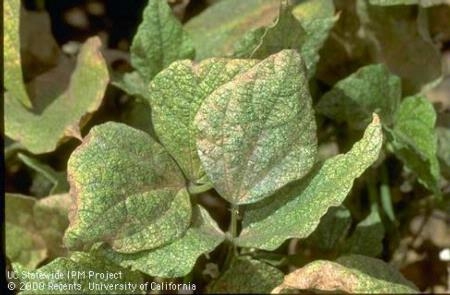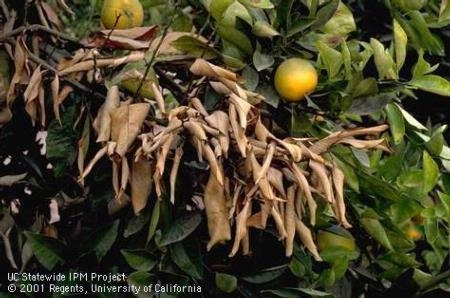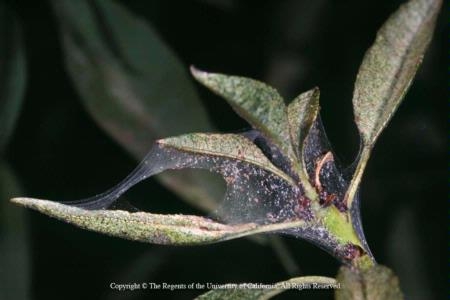Spider mites are among the most common pests found in California. Preferring hot, dusty conditions, and plants under water stress, these tiny pests can produce rapidly between June and September. In some areas of our state, populations stay active year round.
Because spider mites are so small, damage is often the first visible clue of an infestation. Damage is caused by sucking cell contents from leaves. Visual signs of damage to leaves can include: light dots on the leaves, which may turn the leaves a bronze color; leaves may turn yellowish or reddish and drop off; and/or large amounts of webbing may cover leaves, twigs, and fruit.
Luckily cultural controls and natural enemies are often all that is needed to reduce spider mite infestations.
To learn more about spider mites in the home garden and landscape, please see UC ANR’s Spider Mites Pest Note.
Commercial growers can find pest resources by crop on this page of the UC IPM Online website.


